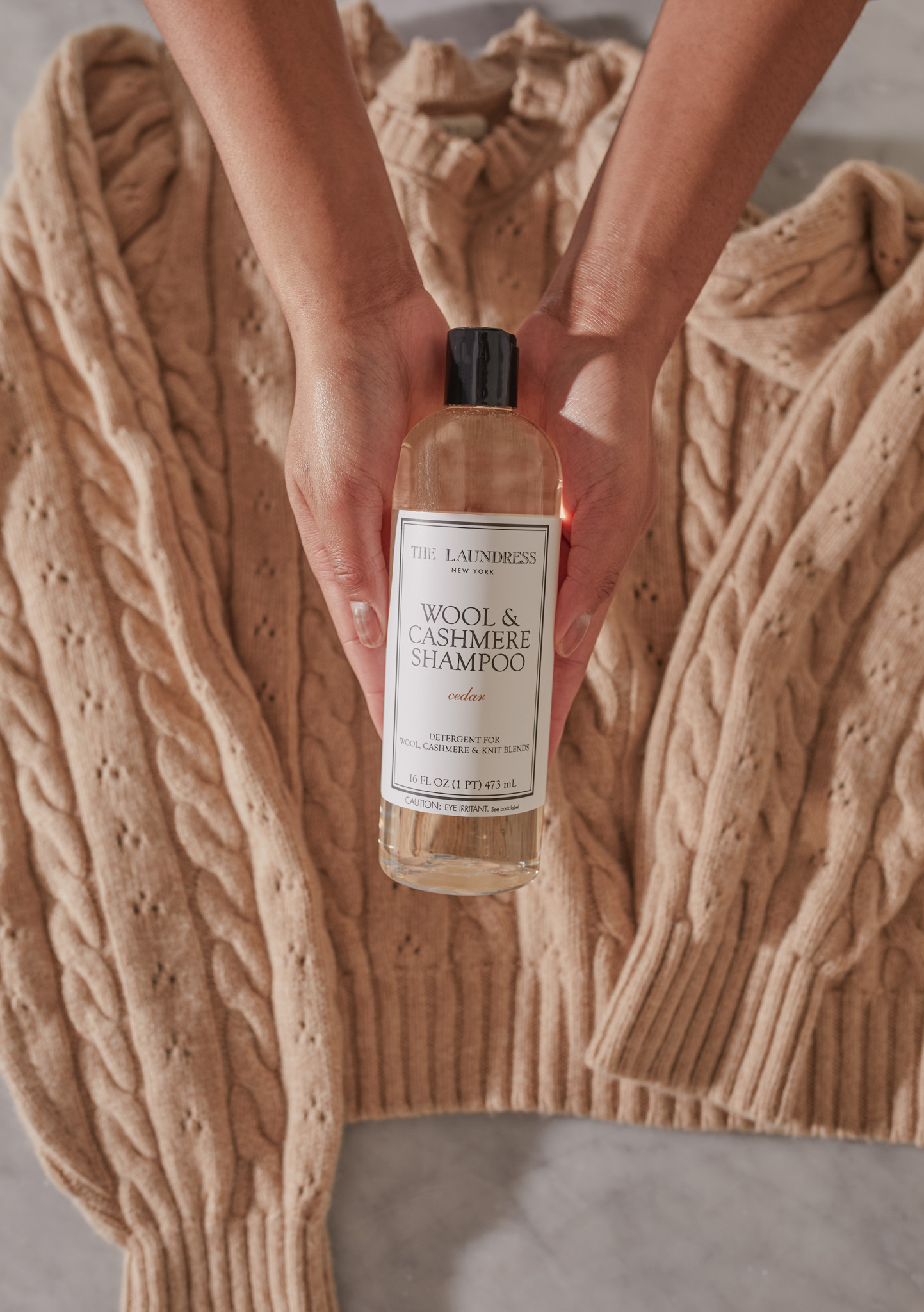The changing of seasons means an energizing and inspiring wardrobe changeover for you. Our handy how-tos will show you how to pack garments away for hibernation with preservation top of mind. These tips also apply to regular garment storage, so you might learn a thing or two about the best ways to store on-season fabrics, too. Follow our easy tips to reorganize, launder, and store fabrics the right way.
STEP 1: Reorganize Whether or not you store items seasonally, you should do a thorough wardrobe “tune up” once or twice a year: Sift through your items, donate things you no longer wear, and reorganize your drawers and closets. Line drawers and shelves with lavender sachets or scented drawer liners to add a fresh scent to your space and garments.

STEP 2: Just Wash It If you’re questioning whether or not something should be washed before stowing for the season (yes, even if it's not that dirty), we recommend always washing it. Here’s how: Launder items with the appropriate Laundress detergent according to fabric type. Our formulas are specially designed to care for your specific garments so you can enjoy exceptional, targeted results. Everyday summer closet staples like swimwear, white t-shirts, jeans, and synthetic workout wear can be laundered using our Signature Detergent formula. Take care to air dry synthetic items like swimsuits and workout clothing to maintain fit and finish. More delicate fabrics, like lightweight summer dresses, blouses, and lingerie, should be washed using a cold setting and the Delicate Wash for a gentler clean. For thin cashmere or merino summer sweaters, wash with the enzyme-free Wool & Cashmere Shampoo and a cold, handwash setting. Proper cleaning will help stop perfume, body products, body oil, food and dirt stains from setting into the fabric, which makes them difficult to remove post-storage. Do not store items that are starched - always launder to remove residue.Everyday Fabrics
Knits & Delicates

STEP 3: Store Whether hanging or folding, pack clothes and textiles in a heavy but breathable fabric, such as canvas, cotton, or linen, with a zipper closure. Never stow away items in plastic or cardboard, especially for long-term storage. Plastic bins, cardboard, and dry cleaner bags may look tidy, but are not suitable for long term textile storage as they can provide the perfect place for critters to invade. Structured cotton or canvas bags are also ideal for on-season storage, as they fit tidily on shelves or in drawers, and add an extra layer of protection to fabrics. We recommend storing lightweight items clean and folded. Delicate fabrics and items prone to wrinkling are best stored folded with acid-free tissue for long-term storage. Acid-free tissue is important for long term storing but not as important for short term i.e., season to season. For off-season short term storage, we recommend storing like items together in clean, zippered storage bags. Do not hang heavyweight knits to store, as hanging can change the shapes of these items over time! Instead, fold knits to store. Heavy fur, leather, and outerwear are best stored hung. If these items are not stored properly, their natural oils (this is what gives these items their supple texture!) can potentially dry out, so always use garment bags where appropriate. Jeans can be stored hanging for off-season, just be sure to protect them in garment bags as needed. Still wondering whether to hang or fold? Check out our go-to guide on what to hang vs fold.Fold
Hang

Items should be stored in a space that's clean, cool, dark and dry, ideally in a spare closet or bedroom. You should typically avoid attics or basements as these often humid and damp areas are breeding grounds for moth, mold, and mildew. Extreme temperatures will damage textiles and direct sunlight will fade and deteriorate fabrics as well.Where To Store:
If you’ve experienced water damage or flooding from storms in your storage areas, you’ve probably run into some mold growth. We always recommend consulting a professional for mold removal before attempting to treat closets or storage spaces yourself. Keep in mind mold is a health hazard, and you should protect yourself accordingly.Mold/Mildew Problems:
Help avoid unpleasant storage surprises by starting off with a clean slate. Launder items before storing, and always store using breathable zippered cotton or canvas bags—never plastic. Check out our guide for more tips and tricks on silverfish, moth, and other bug issues.Silverfish, Moth, Bug Issues:












